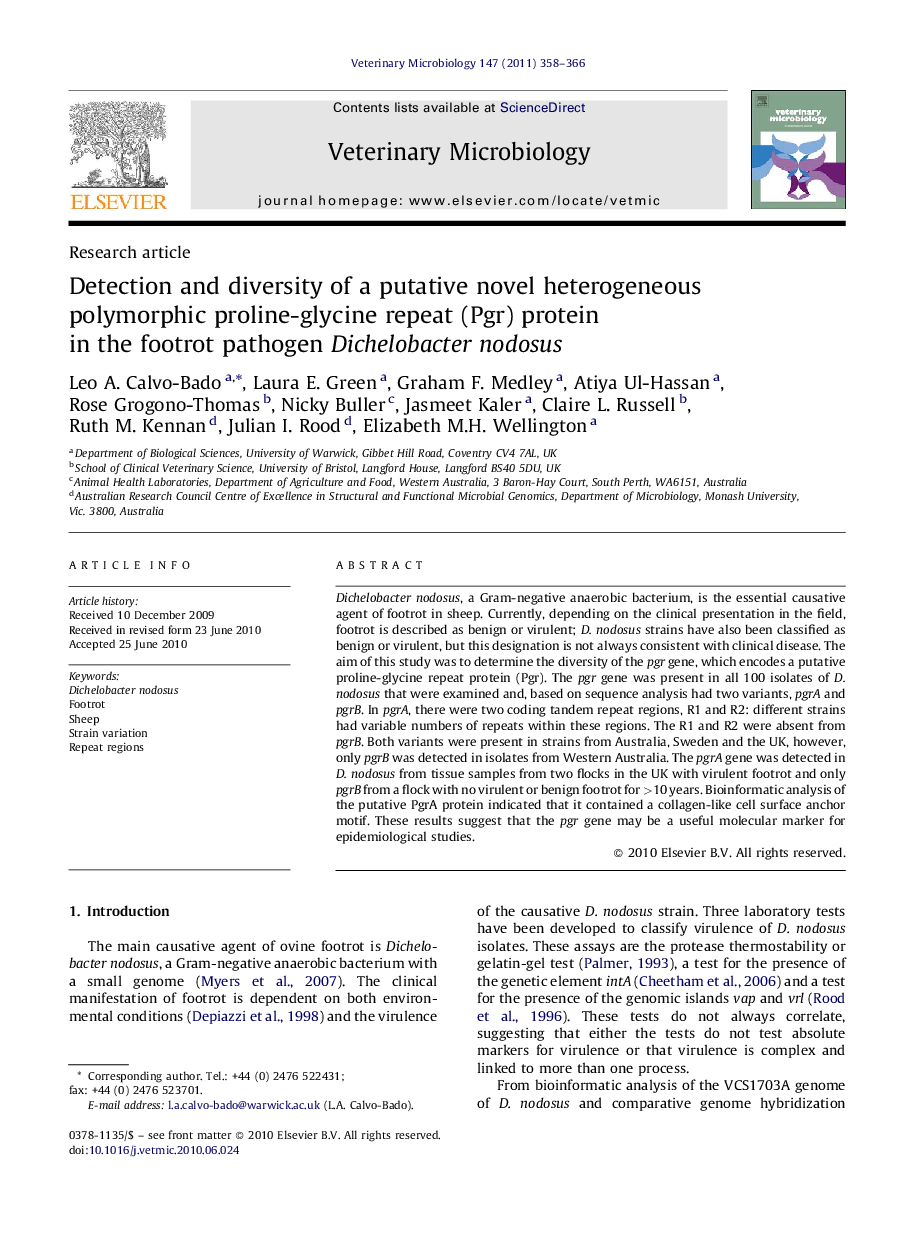| Article ID | Journal | Published Year | Pages | File Type |
|---|---|---|---|---|
| 2467784 | Veterinary Microbiology | 2011 | 9 Pages |
Dichelobacter nodosus, a Gram-negative anaerobic bacterium, is the essential causative agent of footrot in sheep. Currently, depending on the clinical presentation in the field, footrot is described as benign or virulent; D. nodosus strains have also been classified as benign or virulent, but this designation is not always consistent with clinical disease. The aim of this study was to determine the diversity of the pgr gene, which encodes a putative proline-glycine repeat protein (Pgr). The pgr gene was present in all 100 isolates of D. nodosus that were examined and, based on sequence analysis had two variants, pgrA and pgrB. In pgrA, there were two coding tandem repeat regions, R1 and R2: different strains had variable numbers of repeats within these regions. The R1 and R2 were absent from pgrB. Both variants were present in strains from Australia, Sweden and the UK, however, only pgrB was detected in isolates from Western Australia. The pgrA gene was detected in D. nodosus from tissue samples from two flocks in the UK with virulent footrot and only pgrB from a flock with no virulent or benign footrot for >10 years. Bioinformatic analysis of the putative PgrA protein indicated that it contained a collagen-like cell surface anchor motif. These results suggest that the pgr gene may be a useful molecular marker for epidemiological studies.
